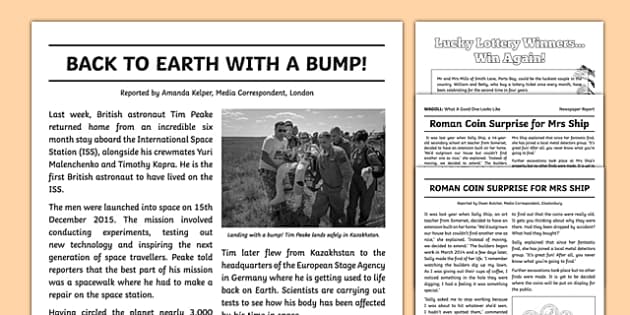News Articles - The Facts
Table of ContentsHow News Articles can Save You Time, Stress, and Money.News Articles - An OverviewNews Articles Fundamentals ExplainedLittle Known Questions About News Articles.News Articles Things To Know Before You Buy
Excellent understanding of various topics provides pupils an one-upmanship over their peers. Also though electronic and social media are conveniently easily accessible, we should not fail to remember just how important it is to check out the newspapers. Parents should try and inculcate the habit of reviewing a newspaper as an everyday regimen to continue the tradition of the revered print tool.Information tales also contain at the very least one of the adhering to essential qualities about the designated audience: closeness, prominence, timeliness, human rate of interest, anomaly, or repercussion. The related term journalese is often used, typically pejoratively, to describe news-style writing. An additional is headlinese. Papers usually follow an expository writing style.
Within these limits, news tales likewise aim to be detailed. Amongst the larger and a lot more revered newspapers, justness and balance is a major element in providing info.
Papers with a global audience, for instance, have a tendency to utilize an extra formal style of writing. News Articles.; usual design overviews include the and the United States Information Design Book.
Not known Factual Statements About News Articles
As a regulation, journalists will certainly not make use of a long word when a brief one will do. News authors try to prevent using the very same word much more than when in a paragraph (in some cases called an "echo" or "word mirror").
Headlines often omit the subject (e.g., "Leaps From Boat, Catches in Wheel") or verb (e.g., "Pet cat woman lucky"). A subhead (also subhed, sub-headline, subheading, subtitle, deck or dek) can be either a subservient title under the main headline, or the heading of a subsection of the write-up. It is a heading that precedes the primary message, or a group of paragraphs of the major message.

Additional signboards of any of these kinds might show up later on in the article (particularly on subsequent web pages) to entice further analysis. Such billboards are likewise made use of as reminders to the article in various other sections of the publication or site, or as promotions for the item in other publication or sites. Regular framework with title, lead paragraph (summary in strong), other paragraphs (details) and call information.

Example of a hard-lead paragraph NASA is proposing an additional room project. The company's spending plan request, introduced today, included a plan to send another mission to the Moon. This time the firm wants to establish a lasting center as a jumping-off place for other space experiences. The budget demands about $10 billion for the task.
The NASA news came as the firm asked for $10 billion of appropriations for the project. An "off-lead" is the second crucial front web page information of the day. The off-lead appears either in the top left corner, or straight listed below the lead on the right. To "hide the lead" is to start the short article with history details or their explanation details of second significance to the visitors, compeling them to read even more deeply into a short article than they should have to in order to uncover the crucial factors.
The 7-Second Trick For News Articles
Common usage is that one or 2 sentences each form their own paragraph. Journalists generally describe the company or framework of a newspaper article as an inverted pyramid. The necessary find and most intriguing elements of a tale are put at the start, with sustaining information following in order of reducing relevance.
It allows individuals to check out a subject to just the deepness that their interest takes them, and without the imposition of details or subtleties that they could think about pointless, yet still making that information offered to much more interested viewers. The upside down pyramid framework additionally allows posts to be trimmed to any kind of approximate size during design, to fit in the room readily available.
Some writers begin their stories with the "1-2-3 lead", yet there are lots of sort of lead offered. This style usually starts with a "5 Ws" opening paragraph (as described over), followed by an indirect quote that serves to support a significant component of the very first paragraph, and afterwards a direct quote to support the indirect quote. [] A twist can home refer to numerous things: The last story current broadcast; a "happy" tale to finish the show.
Longer write-ups, such as publication cover posts and the items that lead the inside sections of a paper, are called. Attribute tales differ from straight information in a number of means. Foremost is the absence of a straight-news lead, the majority of the time. Rather of supplying the essence of a tale in advance, feature writers may try to entice viewers in.
More About News Articles
The reporter usually details interactions with meeting subjects, making the piece more personal. A feature's initial paragraphs typically connect an intriguing minute or occasion, as in an "unscientific lead". From the particulars of a person or episode, its sight rapidly expands to abstract principles about the story's topic. The section that signals what an attribute is about is called the or billboard.

The Editor's Tool kit: A Recommendation Overview for Beginners and Professionals (2001) Allan M. Siegal and William G. Connolly. The New York Times Manual of Style and Use: The Official Design Guide Made Use Of by the Writers and Editors of the Globe's Most Authoritative Newspaper (2002) M. L. Stein, Susan Paterno, and R.